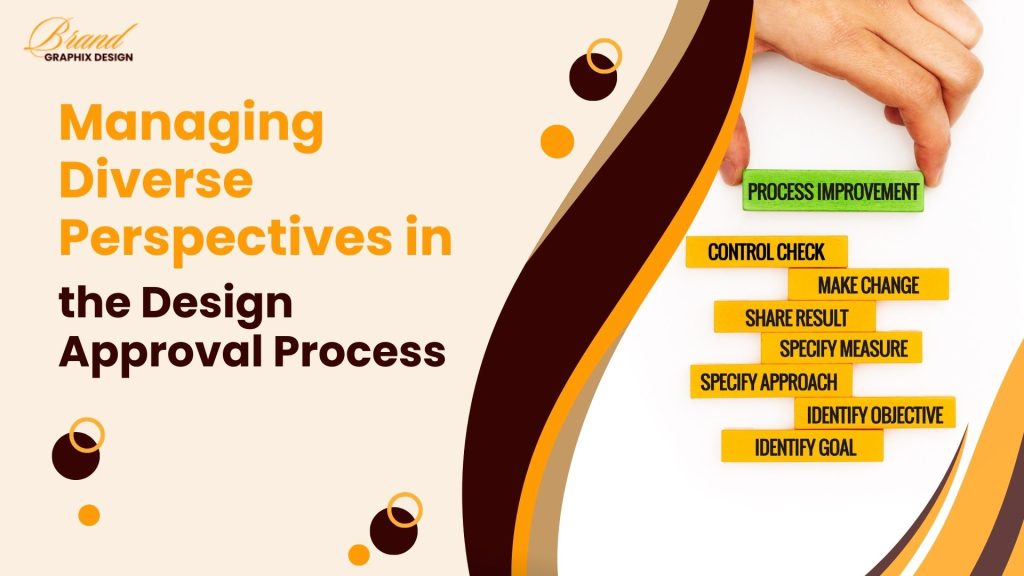In any design project, managing diverse perspectives during the approval process can be challenging. With different stakeholders having unique opinions, preferences, and expectations, it’s crucial to find a balance that satisfies everyone. This guide will help you navigate through these challenges and ensure a smooth design approval process.
Understanding Stakeholder Perspectives
To manage diverse perspectives effectively, you must first understand the different types of stakeholders involved in the design process. Each stakeholder brings a unique viewpoint based on their role, experience, and personal preferences.
Types of Stakeholders
Stakeholders in a design project typically include:
- Clients or project sponsors
- Marketing teams
- Developers and technical teams
- End-users or customers
- Design team members
Each of these groups will have different priorities and concerns. For instance, clients might focus on branding and aesthetics, while developers are more concerned with functionality and technical feasibility.
The Importance of Clear Communication
Clear communication is key to managing diverse perspectives. It ensures that everyone understands the project goals, requirements, and constraints, helping to align expectations and prevent misunderstandings.
Setting Clear Objectives
At the start of the project, set clear objectives that all stakeholders agree on. This includes defining the project’s purpose, target audience, and key deliverables.
- Define the project goals and objectives
- Identify the target audience and their needs
- Outline the key deliverables and timeline
These objectives serve as a common reference point for all stakeholders, guiding discussions and decisions throughout the design process.
Using Collaboration Tools
Collaboration tools can greatly enhance communication and feedback management. Tools like Slack, Trello, or Asana help streamline communication and keep everyone on the same page.
- Create dedicated channels for project discussions
- Use task boards to track progress and assignments
- Share documents and files easily
Regular Meetings and Updates
Regular meetings and updates keep stakeholders informed and engaged. These meetings provide opportunities to discuss progress, gather feedback, and address concerns.
- Set up weekly or bi-weekly project updates
- Encourage open and honest communication
- Address any issues or concerns promptly
Gathering and Managing Feedback
Gathering feedback from all stakeholders is crucial, but managing it can be challenging. Here are some strategies to help you gather and manage feedback effectively.
Structured Feedback Sessions
Conduct structured feedback sessions to gather input from stakeholders. This can include workshops, focus groups, or one-on-one meetings.
- Prepare specific questions or topics for discussion
- Encourage constructive and actionable feedback
- Document all feedback for reference
Prioritizing Feedback
Not all feedback is equally important. Prioritize feedback based on its impact on the project goals and objectives. Focus on addressing critical issues first.
- Identify high-priority feedback that aligns with project goals
- Address critical issues that could affect the project’s success
- Consider feasibility and resource constraints
Using Feedback Tools
Utilize feedback tools like InVision or Figma to gather and manage feedback efficiently. These tools allow stakeholders to leave comments directly on the design, making it easier to track and address feedback.
- Share interactive prototypes for review
- Allow stakeholders to leave comments and suggestions
- Track feedback and revisions easily
Facilitating Consensus and Decision-Making
Reaching consensus and making decisions can be difficult when managing diverse perspectives. Here are some strategies to help facilitate consensus and decision-making.
Establish Decision-Making Criteria
Establish clear criteria for making decisions. This can include factors like alignment with project goals, user needs, and feasibility.
- Define the criteria for evaluating design options
- Ensure all stakeholders understand and agree on the criteria
- Use the criteria to guide discussions and decisions
Mediation and Conflict Resolution
Conflicts may arise during the design approval process. Use mediation and conflict resolution techniques to address these issues and find a resolution that satisfies everyone.
- Listen to all perspectives and concerns
- Identify common ground and shared goals
- Facilitate discussions to find mutually acceptable solutions
Finalizing Decisions
Once a decision is made, document it clearly and communicate it to all stakeholders. Ensure that everyone understands the decision and the rationale behind it.
- Document the final decision and rationale
- Share the decision with all stakeholders
- Ensure everyone understands and agrees with the decision
Implementing and Reviewing Design Changes
Once the design is approved, implement the changes and review them to ensure they meet the requirements. Here’s how to manage this process.
Implementing Changes
Implement the approved design changes according to the project plan. Ensure that all changes are documented and tracked.
- Implement changes according to the approved plan
- Document all changes and revisions
- Track progress and ensure all changes are completed
Review and Validation
Review and validate the changes to ensure they meet the project requirements and stakeholder expectations.
- Conduct a final review with stakeholders
- Validate the changes against the project requirements
- Ensure all feedback and concerns are addressed
Continuous Improvement
Continuous improvement is essential for managing diverse perspectives effectively. Regularly review and improve your processes to ensure they meet the needs of all stakeholders.
- Conduct project retrospectives to identify areas for improvement
- Gather feedback from stakeholders on the process
- Implement improvements to enhance future projects
Building Strong Relationships with Stakeholders
Building strong relationships with stakeholders is key to managing diverse perspectives effectively. Here’s how to build and maintain these relationships.
Engage Stakeholders Early
Engage stakeholders early in the project to build trust and ensure their input is considered from the start.
- Involve stakeholders in the initial planning and goal-setting
- Seek their input and feedback throughout the project
- Build trust by being transparent and responsive
Maintain Open Communication
Maintain open communication with stakeholders to keep them informed and engaged. Regular updates and transparent communication help build trust and prevent misunderstandings.
- Provide regular updates on project progress
- Encourage open and honest communication
- Address any concerns or issues promptly
Show Appreciation for Stakeholder Input
Show appreciation for stakeholder input and feedback. Acknowledge their contributions and demonstrate how their input has influenced the project.
- Thank stakeholders for their input and feedback
- Show how their feedback has been incorporated into the project
- Recognize their contributions and efforts
Ready to manage diverse perspectives effectively and ensure a successful design approval process?
Contact us at +91 911 891 1171 for professional design services.
Let our team help you navigate the complexities of the design approval process and deliver outstanding results.


